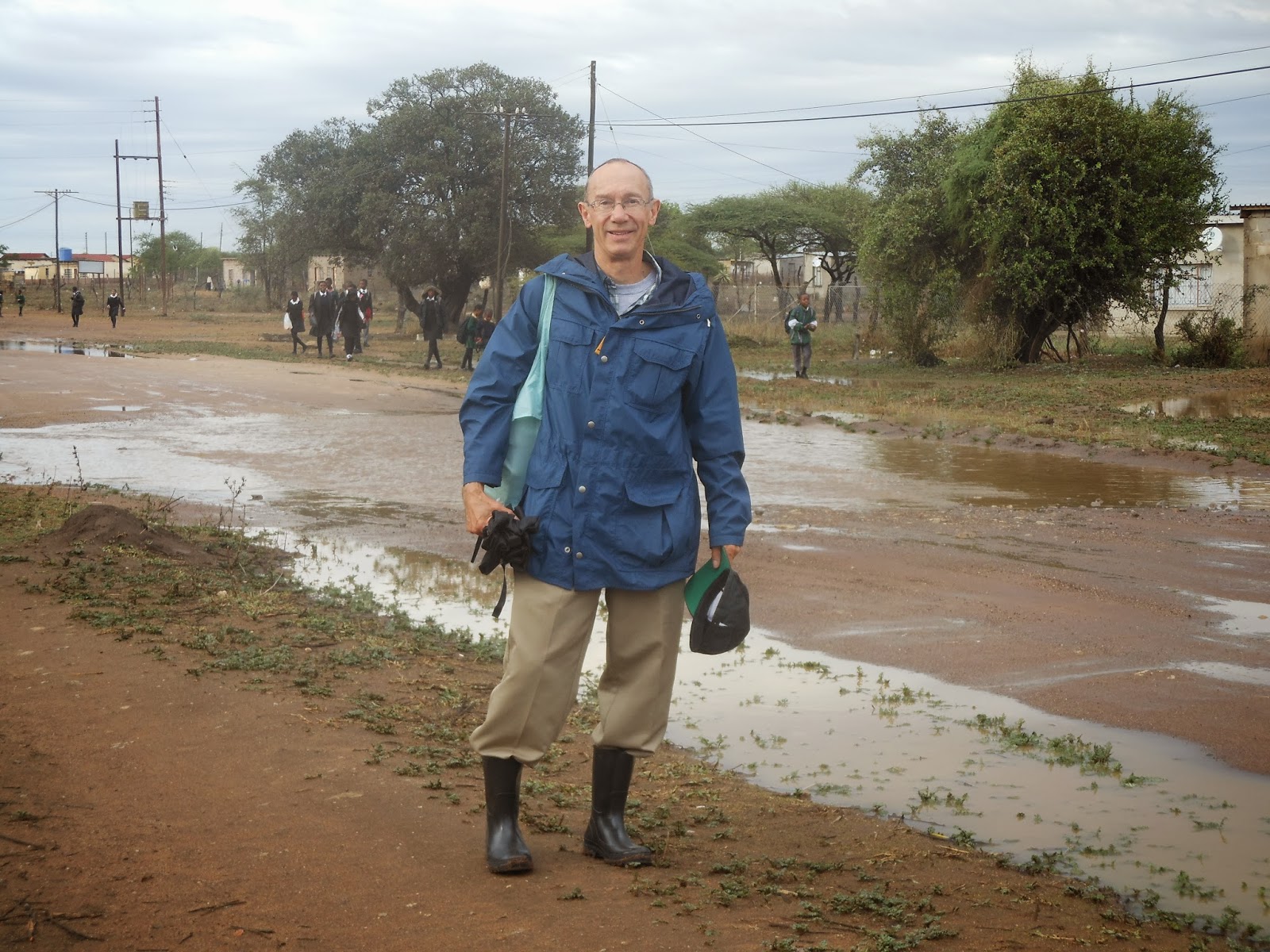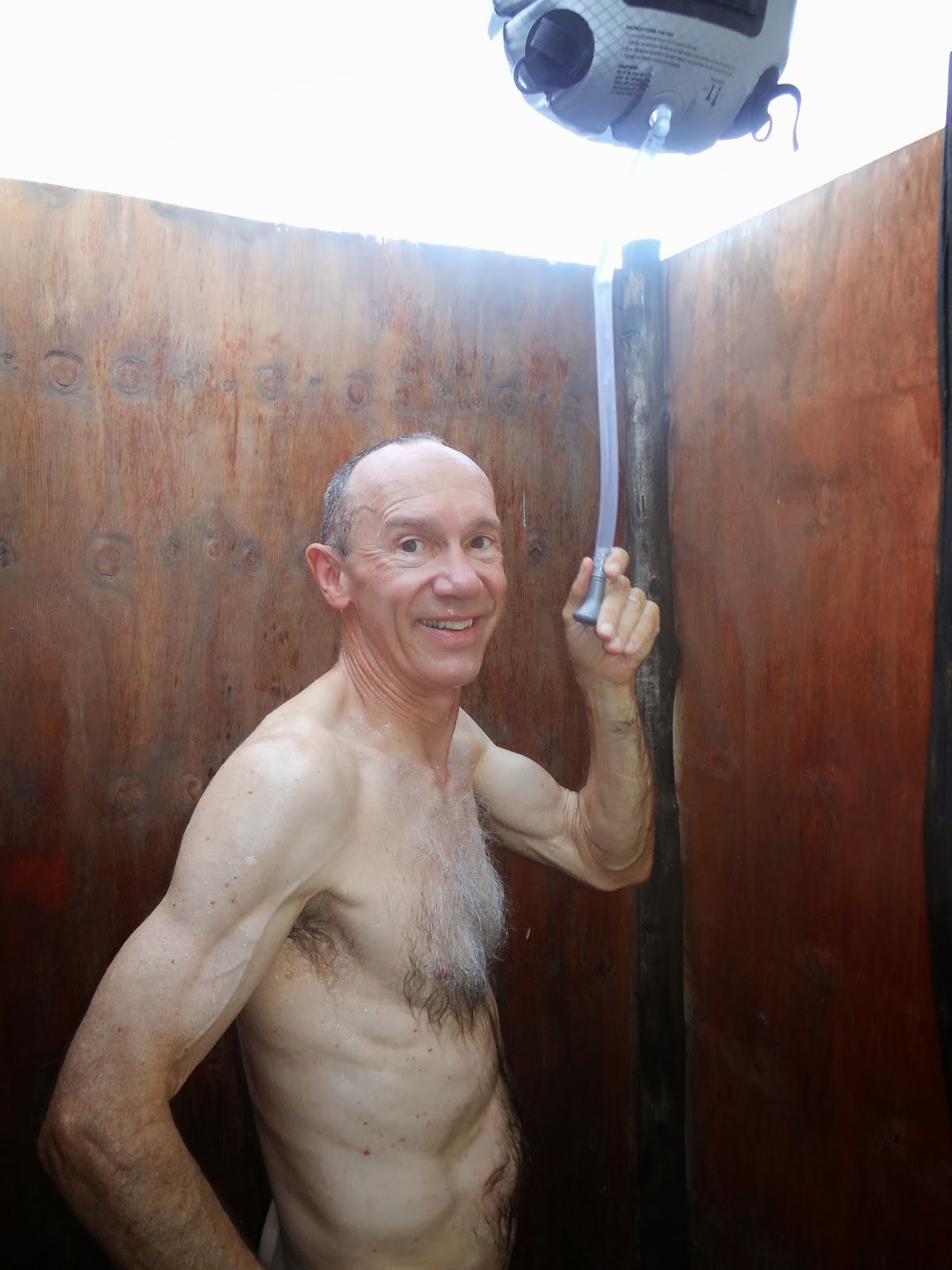We had heard that it can rain hard
here in the summer, and that the spring rains are late this year,
which is a serious issue in a region where there is much food
insecurity. But we were not prepared for the rain, which started
Thursday evening, and continued for four days, until Tuesday morning,
sometimes just spitting, sometimes coming in torrents. On the
corrugated metal roof of our hut it was sometimes deafening.
We had planned to go on Friday to a
game reserve 30 miles away, but awoke to a continuing, driving rain.
Pretty much the same Saturday, Sunday, and Monday. We never really
left the hut. When we did we had to pick our way around increasingly
deep puddles. You really plan your trips to the latrine – 50 yards
away – under those circumstances. Sometimes the clouds would part
briefly, then it would suddenly cloud up and pour. KUF stayed after
a meeting at the local high school on Monday to try to get on the
internet at their computer lab, and got pretty soaked on her way
home.
The picture shows our homestead
Tuesday morning. A sea of mud. The domestic helper tried to fit a
wash into a brief opening Monday – no luck. Our hut is behind me;
the main house is to the left of the picture.
And this shows me on the 1+ mile walk
to the crossroads. We pass dozens, perhaps hundreds of chldren on
their way from the bus rank to the local high school and to a primary
school different from the one Mark teaches at. We bought the rain
boots a few weeks ago in our local shopping town. Glad to have them.
We've now been in at least 2 classes
at each of these schools, and we are fairly distinctive here, so
many of the students we pass on the road know us, and some greet us
by name as we pass, or just call out “teacher.” Kind of nice.
We know a few of the students by name, too, which is even nicer.
Some of the students walk in the rain with no rain gear. One
yesterday was wearing plastic bags around her shoes.
We go Saturday to a “backpackers”,
a species of low budget hostel that caters to the income (or lack
thereof) bracket in which most of the PCVs can be found. Many of the
70 PCVs in the country (2 groups, one that had been here a year when
we arrived, and our group of 33) are gathering to celebrate Halloween
there this Saturday night. The hostel is near Manzini, the country's
commercial hub. Then it is a short khumbi (van) ride to the training
facility, where we stay Sunday night and then for another 10 days,
till Nov. 7, for intensive language classes and training in
“monitoring and evaluation” - an effort to see if we are doing
any good here, and put quantifiable numbers to it. It would be easy
to be skeptical, but I've learned to suspend disbelief, and the Peace
Corps ends up making sense remarkably frequently.
Today was a special day. The Peace
Corps driver, on routine rounds about the country (it's a very small
country – the size of New Jersey), dropped off 2 packages, one from
Mark's sister Martha, the other from KUF's “walking group”
friends. These were very thoughtful responses to our needs. All the
senders put a lot of care and effort into these packages.They are
very, very much appreciated. Thanks very, very much.













